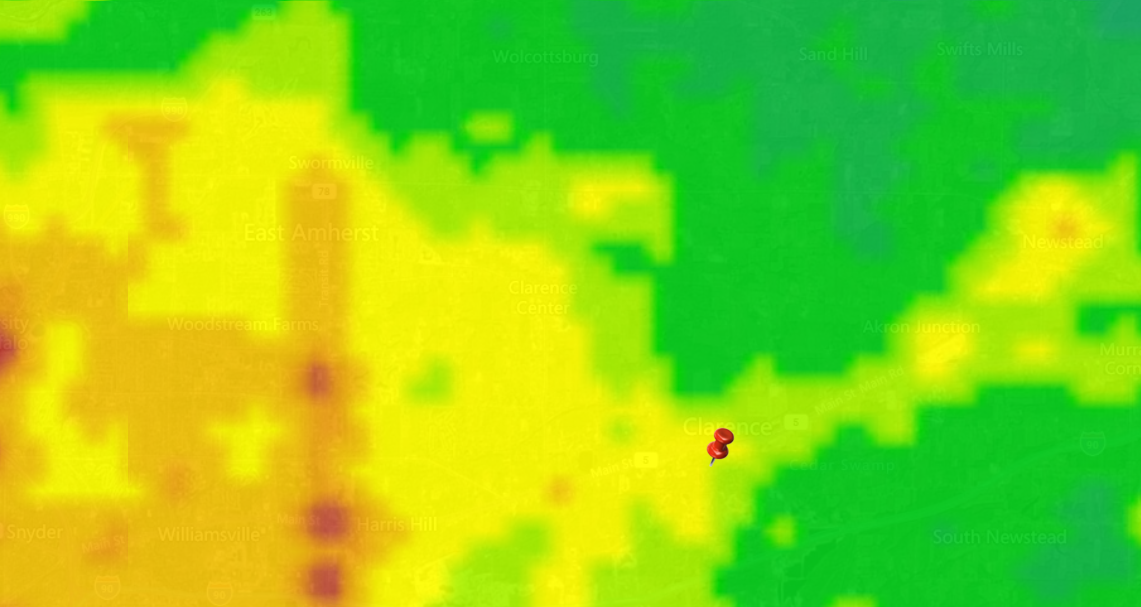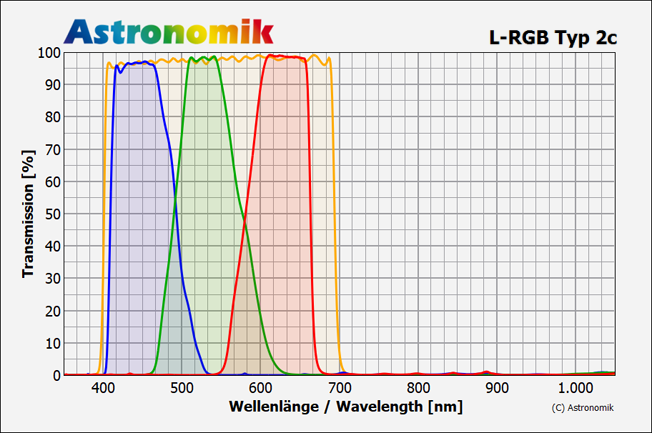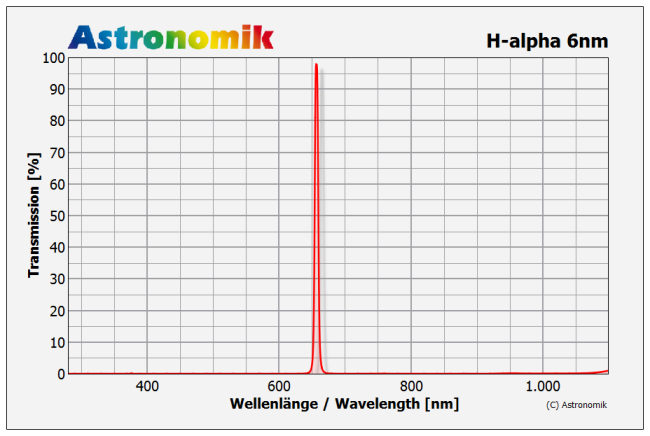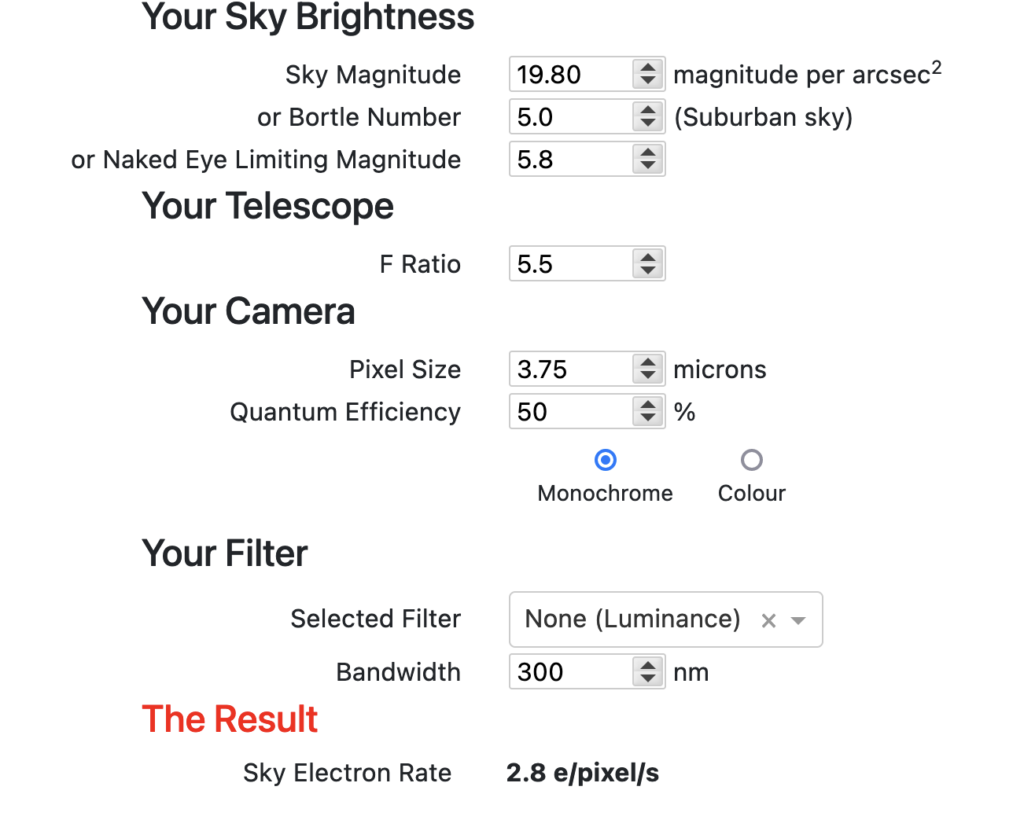Ideal imaging parameters are not easy to find since they are dependent on a number of factors, most importantly the sky quality ,the camera and the filter(s) being used.
My Skies
Suburban
- SQM: 19.96 mag./arc sec2
- Brightness: 1.12 mcd/m2
- Artif. bright.: 944 μcd/m2
- Ratio 5.52
- Bortle : Class 5
- Elevation: 191 meters

My Camera: ASI 6200 MM Pro
The ASI6200 is a powerful CMOS Camera. The ASI6200MM Pro uses a full-frame format. The sensor length and width are 36mm * 24mm respectively, and the diagonal is 43.3mm. This is a 62MP camera with a small pixel size of 3.76um that can accommodate a large well depth of 51.4ke.
IMX455 backlit sensor
Sony’s back-illuminated CMOS image sensor improves the sensitivity and noise reduction – the key factors to enhancing image quality. It does this by radically realigning the fundamental pixel structure from front-illumination to back-illumination, while still retaining the advantages of CMOS image sensors such as low power consumption and high-speed operation.
With a conventional front-illumination structure, the metal wiring and transistors on the surface of the silicon substrate that form the sensor’s light-sensitive area (photo-diode), impede photon-gathering carried out by the on-chip lens. A back-illuminated structure minimizes the degradation of sensitivity to the optical angle response, while also increasing the amount of light that enters each pixel due to the lack of obstacles such as metal wiring and transistors. These components have been moved to the back-side of the silicon substrate.
Camera Performance
The ASI6200MM Pro has excellent performance with a dynamic range of up to 14 stops that will greatly reduce the issue of overexposed images, and make colour gradients look smoother and more natural-looking.
When the gain value is set to 100, the HCG high gain mode is turned on. With the HCG-mode turned on, the readout noise is greatly reduced, and the dynamic range is basically unchanged.

QE value
The QE peak value of the ASI6200MM Pro is 91%.

Two-stage TEC cooling, ultra-low dark current
Thanks to the two stage TEC cooling, ASI6200MM Pro can lower the CMOS sensor temperature to more than 35 degrees Celsius below ambient temperature, which can greatly reduce dark current generation and sensor noise even during extended exposure times.
*The Delta T 35℃ is tested at 30℃ ambient temperature. It might get down when the cooling system is working for a long time. Also, as the ambient temperature falls, the Delta T would also decrease.
The unique dark current suppression technology can further reduce dark current noise. At a cooling temperature of 0 °C, the dark current noise is only 0.003e/s/pixel. This means a 300s exposure will only cause a dark current noise of 0.9e-, which is completely negligible!
USB3.0 & 256M DDR3 Memory
The ASI6200MM Pro is equipped with a USB 3.0 transmission interface and a built-in 256MB DDR3 cache to ensure stable and secure data transmission. Under long exposure, it effectively avoids frame dropping and greatly reduces the glow effect caused by slow reading speed.
Filters
Astronomik filters were chosen for their exceptional characteristics and parfocal 1 mm thickness across the board, making refocussing less critical on filter changes. This would permit sequencing an interleaving of different filter exposures for nights with limited viewing or when a session is split over multiple nights.




And now the Math!
Dr. Robin Glover’s analysis is invaluable for understanding how to pick gain and sub length.
The key formula for sub exposure in seconds as a function of acceptable noise(%) in picture to Read Noise level works out to:
E = C(Read Noise2)/Pollution

P was calculated on Sharpcap website as follows :

Giving us the following values:
| Filter | Sky electron rate (e/pixel/s) | Exposure (s) |
|---|---|---|
| Luminance 300 nm | 2.8 | 10 |
| RGB 100 nm | 0.98 | 30 |
| Narrow Band 7 nm | 0.09 | 300 |
